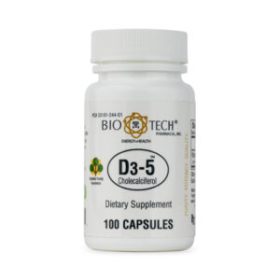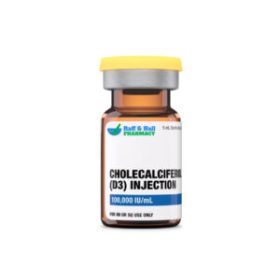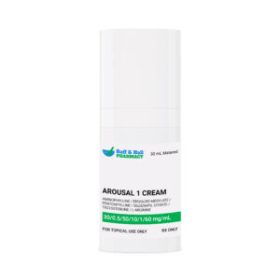Testosterone Enanthate Injection (Grapeseed Oil) (5 mL Vial)
Testosterone Enanthate Injection (Grapeseed Oil) (10 mL Vial)
Testosterone Enanthate Injection (5 mL Vial) †
† commercial product
Testosterone is a key sex hormone mainly found in males, responsible for developing primary and secondary sexual characteristics during puberty. Females also have testosterone but in smaller amounts, where it plays important roles in their body.
Testosterone’s effects start early, around the seventh week of pregnancy. The Y chromosome triggers the formation of testes, which produce testosterone and other factors that guide the fetus to develop male physical traits like the penis, prostate, and testicles.
During male puberty, testosterone levels surge, controlled by signals from the brain. LH then stimulates the testes to make more testosterone. This hormone drives changes like genital growth, increased sex drive, sperm production, a deeper voice, and male-pattern hair growth.
Beyond sexual development, testosterone supports muscle growth by enlarging muscle fibers, helping men build and maintain strength. It also plays a vital role in bone health by converting into other hormones that protect bones from breakdown and encourage new bone formation.
It may also influence brain functions like memory and reasoning, with low testosterone linked to some cognitive difficulties.
Mood is another area affected by testosterone. Men with low levels often experience depression, but testosterone treatment has been shown to improve mood and well-being.
It’s a slow-release preparation given into the muscle or under the skin and has been used since 1937 to help men with hormone deficiencies.
The majority of testosterone’s effects on the body come from its binding to and interaction with androgen receptors. The testosterone released by the testes is transformed into a more powerful metabolite called as dihydrotestosterone (DHT) in tissues throughout the body; this conversion of The cytoplasmic enzyme known as 5 alphareductase helps testosterone to its more active form. Then, DHT binds to the androgen receptors inside the Target cell cytoplasm forms a DHTreceptor complex. Once the DHT complex has formed, it enters the nucleus of the target cells and attaches to the pertinent nucleotide sequences on Nuclear transcription then synthesizes the relevant proteins from the chromosomal DNA.
Through its conversion into estradiol, testosterone acts in the body a second way; the amount of testosterone that follows this route Is far lower than with DHT synthesis. Produced estradiol then binds to estrogen receptors found inside cells, therefore starting to show its effects on bone density development and upkeep.
Several situations exist under which testosterone injections should not be given or given very carefully:
In males with any kind of breast or prostate cancer, testosterone is strictly contraindicated.
Individuals allergic to any of the ingredients should not be given testosterone enanthate injections.
Women who are pregnant or have a high probability of becoming so should not be given testosterone injections since this could cause masculinization of the child.
When giving testosterone to patients with compromised kidney or liver function, one must use care.
Some possible adverse effects of external testosterone enanthate injections are:
Conditions of the liver including peliosis hepatitis as well as hepatocellular carcinomas
Salt and water retention may cause lower leg edema in people with prior heart problems.
Some men could have gynecomastia, a disorder that results in larger breasts.
This implies that studies have shown significant fetal abnormalities when given to expectant mothers. Testosterone injections are thus entirely prohibited in pregnancy; their dangers much outweigh any possible advantages derived from their use.
In women nursing, testosterone injections are not recommended since studies have shown it to be expressed in breast milk to a considerable amount.
Store this medication at 68°F to 77°F (20°C to 25°C) and away from heat, moisture and light. Keep all medicine out of the reach of children. Throw away any unused medicine after the beyond use date. Do not flush unused medications or pour down a sink or drain. NOTE: Warming and shaking the vial should redissolve any crystals that may have formed during storage temperatures lower than recommended.
- Bain, J., “The many faces of testosterone”, Clinical Interventions in Aging, vol. 2 issue 4, pp. 567-576. Available: https://www.ncbi.nlm.nih.gov/pmc/articles/PMC2686330/– LinkOpens in New Tab
- Nassar, G.N., Leslie, S.W., “Physiology, Testosterone”, StatPearls. Available: https://www.ncbi.nlm.nih.gov/books/NBK526128/– LinkOpens in New Tab
- Atkinson, R.A., Srinivas-Shankar U., Roberts, S.A., Connolly, M.J., Adams, J.E., Oldham, J.A., Wu, F.C., Seynnes, O.R., Stewart, C.E., Maganaris, C.N., Narici, M.V., “Effects of Testosterone on Skeletal Muscle Architecture in Intermediate-Frail and Frail Elderly Men”, The Journals of Gerontology: Series A, Vol. 65A, issue 11, pp.1215–1219. November 2010. Available: https://academic.oup.com/biomedgerontology/article/65A/11/1215/596059– LinkOpens in New Tab
- Mohamad, N. V., Soelaiman, I. N., , Chin, K. Y., “A concise review of testosterone and bone health”, Clinical interventions in aging, vol. 11, pp. 1317–1324. September 2016. Available: https://www.ncbi.nlm.nih.gov/pmc/articles/PMC5036835/– LinkOpens in New Tab
- Coviello, A. D., Kaplan, B., Lakshman, K. M., Chen, T., Singh, A. B., Bhasin, S., “Effects of graded doses of testosterone on erythropoiesis in healthy young and older men”, The Journal of clinical endocrinology and metabolism, vol.93 issue 3, pp. 914–919. March 2008. Available: https://www.ncbi.nlm.nih.gov/pmc/articles/PMC2266950/– LinkOpens in New Tab
- Resnick, S.M., Matsumoto, A.M., Stephens-Shields, A.J., Ellenberg, S.S., Gill, T.M., Shumaker, S.A., Pleasants, D.D., Barrett-Connor, E., Bhasin, S., Cauley, J.A., Cella, D., Crandall, J.P., Cunningham, G.R., Ensrud, K.E., Farrar, J.T., Lewis, C.E., Molitch, M.E., Pahor, M., Swerdloff, R.S., Cifelli, D., Anton, S., Basaria, S., Diem, S.J., Wang, C., Hou, X., Snyder, P.J., “Testosterone Treatment and Cognitive Function in Older Men With Low Testosterone and Age-Associated Memory Impairment”, Journal of the American Medical Association. Vol.317 issue 7, pp.717–727. 2017. Available: https://jamanetwork.com/journals/jama/fullarticle/2603930– LinkOpens in New Tab
- Spitzer, M., Basaria, S., Travison, T. G., Davda, M. N., DeRogatis, L., Bhasin, S., “The effect of testosterone on mood and well-being in men with erectile dysfunction in a randomized, placebo-controlled trial”. Andrology, vol.1 issue 3, pp.475–482. March 2013. Available: https://www.ncbi.nlm.nih.gov/pmc/articles/PMC3630276/– LinkOpens in New Tab
- Wein, H., “Understanding How Testosterone Affects Men”, NIH Research Matters. September 2013. Available: https://www.nih.gov/news-events/nih-research-matters/understanding-how-testosterone-affects-men– LinkOpens in New Tab
- Funder, J.W., “The multiple actions of testosterone in men: nature knows best”, Asian Journal of Andrology, vol.16 issue 2, pp. 266-267. March – April 2014. Available: https://www.ncbi.nlm.nih.gov/pmc/articles/PMC3955337/– LinkOpens in New Tab
- Handelsman, D.J., “Androgen Physiology, Pharmacology, Use, and Misuse”, Endotext. October 2020. Available: https://www.ncbi.nlm.nih.gov/books/NBK279000/– LinkOpens in New Tab
- “Testosterone enanthate,” DrugBank. Available: https://go.drugbank.com/drugs/DB13944– LinkOpens in New Tab
- “Testosterone Pregnancy and Breastfeeding Warnings”, Drugs.com. Available: https://www.drugs.com/pregnancy/testosterone.html





